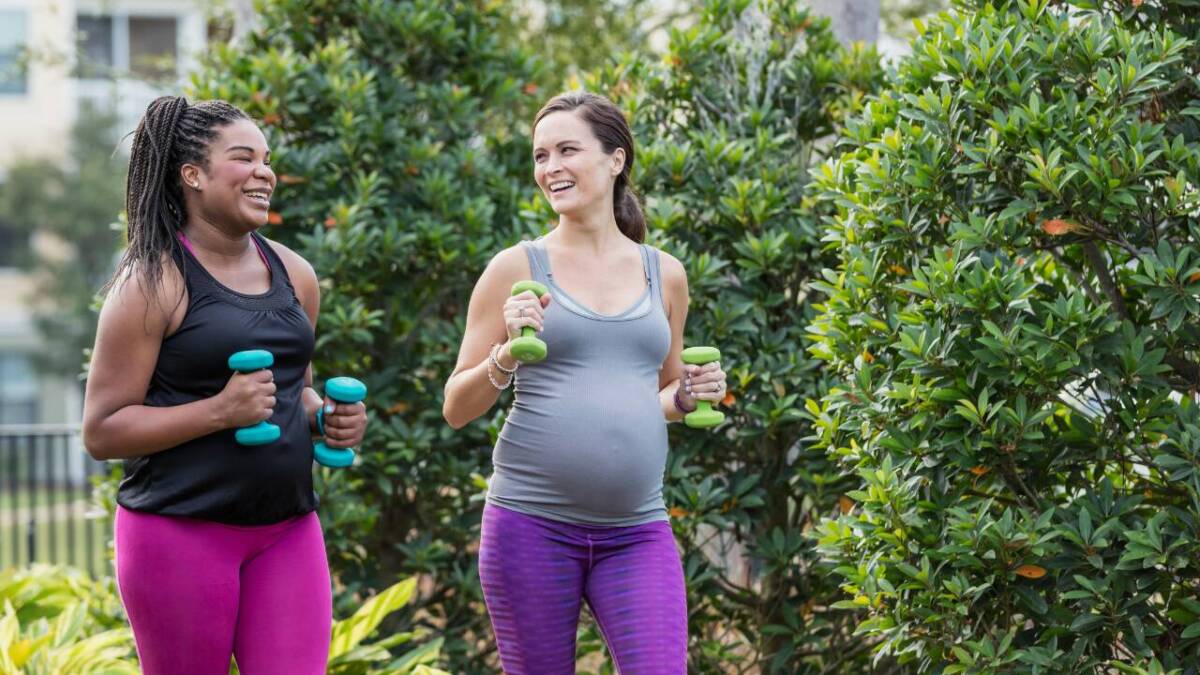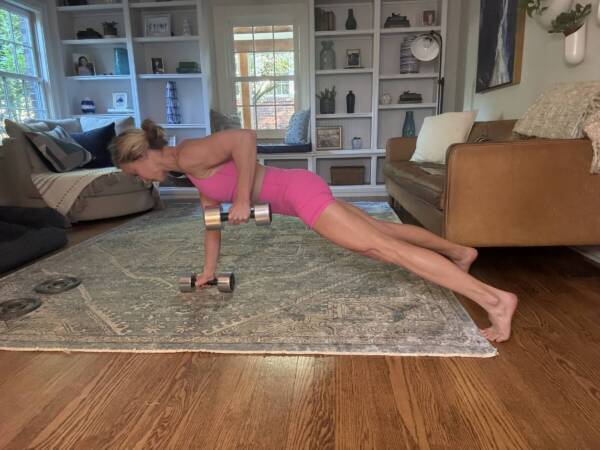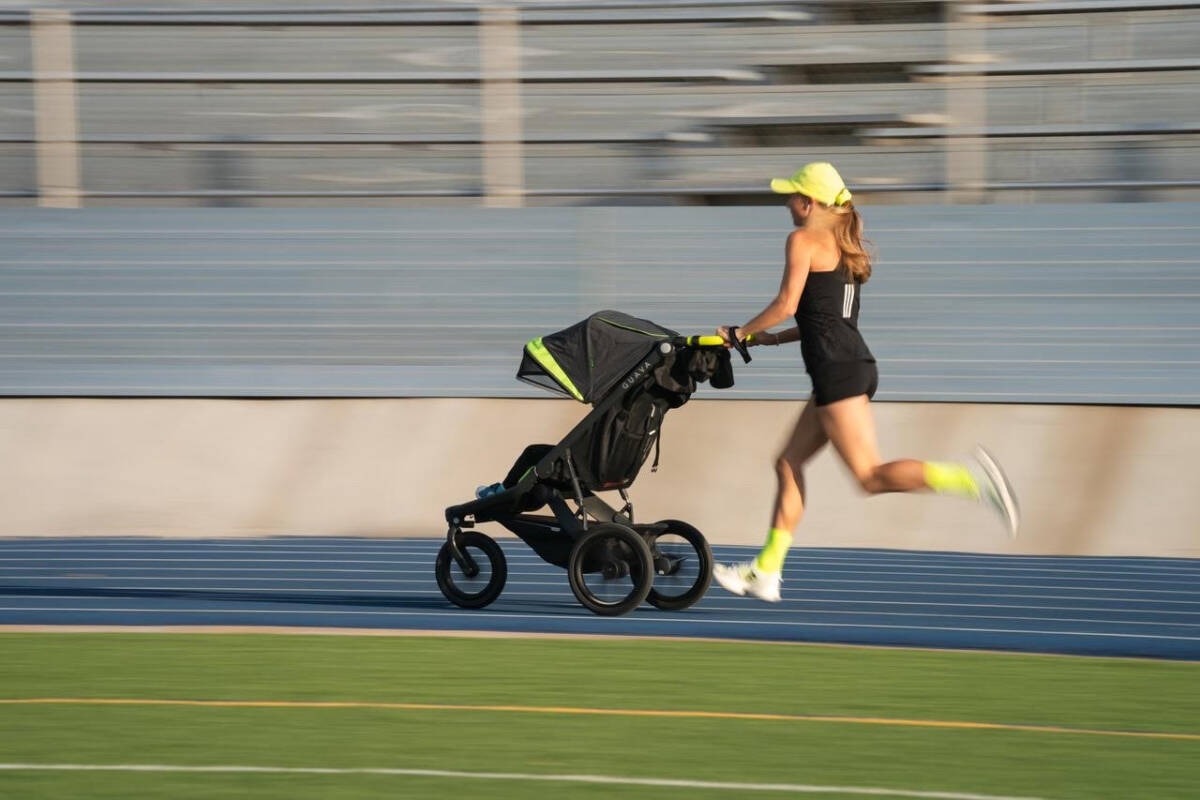Treadmill and Pregnancy: Yay or Nay?
Your treadmill and pregnancy can work together well. Some of the discomforts and risks of running while pregnant such as feeling off balance, being hot, or needing to use the restroom often can be mitigated by using a treadmill. Pairing a treadmill and pregnancy can help you have a healthy and fit pregnancy by keeping you more comfortable and safer. Read on to learn more about how to use a treadmill during pregnancy.

Note: I am a running coach, not a doctor. Talk to yours before running while pregnant.
Skip Ahead
- Running on a Treadmill During Pregnancy Tips
- Safety Precautions for Treadmill & Pregnancy
- Are treadmills bad for you?
- Benefits of Using a Treadmill While Pregnant
- Prenatal Treadmill Workout
- Prenatal Treadmill Workout (Sample)
- Can walking too much cause early labor? Does running induce labor?
- Listen to Your Body
Running on a Treadmill During Pregnancy Tips
If you are cleared to exercise during pregnancy, below are tips for using a treadmill while pregnant.
Have the right foot support.
You want to make sure you have the right support and cushion for your growing body (and feet). Run on a treadmill that has maximum give and make sure you are wearing properly fitted shoes. Your feet may get bigger during pregnancy, so you may need a pregancy-only pair of running shoes!
Stay cool.
Pregnant women, especially in the first trimester, can have a higher core temperature. And being overheated can post risks to both mom and baby. Therefore, have a fan nearby to keep you cool–even just a clip-on desk fan can help.
Hydrate.
Hydration is vital for the health of pregnant women to support fetal circulation, amniotic fluid, and a higher blood volume. Indeed, staying hydrated is one of the biggest habits I push on my pregnant athletes I coach. Always, run with a water bottle or sports drink on the treadmill tray.
Walk as needed.
No need to be a workout hero. Pregnancy is not a time to “push through pain.” You will be doing that soon enough. Therefore, take walk breaks as needed. Even if you don’t really feel like you have to walk, if the urge is there, listen and do it.
Choose incline over pace.
If you want to challenge yourself, choose to increase incline rather than increase pace for more intensity. This will work the cardiovascular system and musculoskeletal system, but it is easier on the joints which are looser due to the release of the hormone relaxin.
Run by effort.
Your paces will not be the same as your prenatal paces. Therefore, use effort (or rate of perceived exertion/RPE) to gauge how hard your body is working. Unless you are training for a race (with the guidance of a coach like me), most runs should be at an easy effort. Perform the “talk test” where you can hold a conversation while running to ensure you are keeping it easy.
Support your growing belly.
Wear a belly band as your pregnancy progresses. Belly bands can keep you comfortable so you can run for longer into your pregnancy, with a lower rate of injury. I suggest the best belly bands that fit well and stay cool here.
Use the railings.
Use the treadmill railings to help with balance as falling is the biggest risk for pregnant women running on a treadmill. And of course, if you feel light-headed or dizzy at any moment, step off the treadmill.
Check out my Pregnancy Core Workout!
Safety Precautions for Treadmill & Pregnancy
While there are many benefits of using a treadmill during pregnancy to run or walk such as reduced risk of pregnancy complications and birth complications, reduced risk of premature birth, increased bone density, increased energy, better sleep quality, and less constipation, there are still risks.
As noted by Kate Baird, exercise physiologist at the Hospital for Special Surgery, the biggest risk for treadmill and pregnancy running is the risk of falls.
Follow the below safety precautions from Baird for running on a treadmill while pregnant:
-
- Ensure you know how to use your treadmill including how to stop it, and it’s been serviced recently.
-
- Do a proper warm-up, starting with a walk of 5-10 minutes to make sure your body is warmed up and you are acclimated to how it feels.
-
- Go at a tolerable and safe speed.
-
- Ensure the safety clip is used.
-
- Run in the middle of the treadmill to avoid bumping your bump.
-
- Step off the treadmill if you experience any dizziness.
-
- Do not abruptly stop the treadmill. Slow to a stop.
-
- As noted, use railings as needed, and keep water and a fan nearby.
Are Treadmills Bad for You?
Treadmills are not bad for you. Treadmills have a bad reputation as running on a treadmill can be boring. Poor quality treadmills can also lead to injury as they aren’t as cushioned or can malfunction.
However, in most cases, treadmills are a wonderful tool in helping people stay consistent with their exercise program—no matter the barrier. This includes bad weather, having small children at home, or the discomforts that can accompany pregnancy.
Benefits of Using a Treadmill While Pregnant
There are many benefits to using a treadmill while pregnant:
-
- Helps you stay consistent with exercise, hitting the ACOG-recommended 150 minutes of exercise a week number.
-
- Allows easy access to the bathroom for frequent pit stops.
-
- Enables you to control your pace and incline to avoid over-exertion.
-
- Smooth terrain and railings help you stay balanced and avoid falling.
-
- You can easily tailor your workouts as your pregnancy progresses.
-
- A fan can help you stay cool as your core temperature can rise more quickly during pregnancy. If anything feels uncomfortable, off, or hurts, you are safe at home or a gym, to stop and get help.
Prenatal Treadmill Workout (Sample)
Running while pregnant is a different journey for everyone. Below is a sample prenatal treadmill workout for a trained pregnant runner who ran before pregnancy.
You can scale this workout to meet where you’re at by increasing or decreasing the time, incline, pace, or interval reps. This workout uses incline as the progression variable as it strengthens the musculoskeletal system and the cardiovascular system with less impact than pace.
Be sure you are cleared by your healthcare provider before running.
Prenatal Treadmill Workout
-
- Minutes 5-10: Walk at an increasing brisk pace to warm-up at a 1 percent incline.
-
- Minutes 10-15: Increase pace to a comfortable jog where you can talk. Increase incline to 2 percent.
-
- Minute 15-17: Slow to a walk for 2 minutes. Keep incline the same.
-
- Minutes 17-22: Increase pace to a jog, but also increase incline to 3 percent.
-
- Minutes 22-24: Decrease incline to 2 percent and pace to a brisk walk.
-
- Minutes 24-29: Increase pace to a jog, but also increase incline to 4 percent. If you feel comfortable, you can increase pace by .5 percent.
-
- Minutes 29-31: Slow pace to a brisk walk and decrease incline to 2 percent.
-
- Minutes 31-36: Last interval! Increase pace to a moderate-paced run (about 1 percent more than your starting run pace). Increase incline to 5 percent. Adjust effort as needed. This should feel comfortably hard. You can talk and you aren’t gasping for air.
-
- Minutes 36-40+: Slow to a walk. Decrease incline to 0 percent. Walk for 5-10 minutes until your heart rate has regulated and you feel recovered.
*You can make this a Prenatal Walking Treadmill workout by keeping the pace at a brisk walk but still increasing the incline.
Can walking too much cause early labor? Does running induce labor?
For most healthy pregnant women without pregnancy complications, you cannot walk too much during pregnancy (as long as you are wearing good shoes such as running shoes or recovery shoes!). However, there is evidence that walking during late pregnancy can induce labor.
I have coached many pregnant women and have had one who had to cutback her running volume due to an increase in Braxton Hicks (false labor contractions) during exercise (as suggested by her doctor). She continued to run throughout the duration of her pregnancy with an intentional focus on hydration which can reduce Braxton Hicks occurrence.
Listen to Your Body
You may have read in most articles about pregnant running to “listen to your body.” What does that mean? That means that if anything feels strange, uncomfortable, or hurts—you should stop doing it and call your doctor.
Be sure to check out my Complete Pregnant Running Guide for specific advice on how to run while pregnant and when to stop.
Every body and every pregnancy is different. I was able to run throughout my first pregnancy but not my second. Your health and the health of your baby is more important than any running goal. This is not a time to “push through pain.”
If you want guidance with your running goals including treadmill and pregnancy plans, check out my run coaching services. Did you use a treadmill while pregnant?






